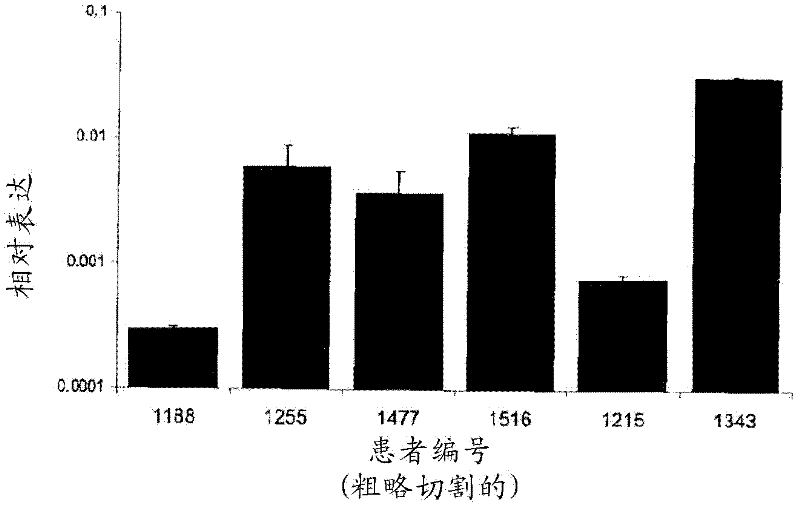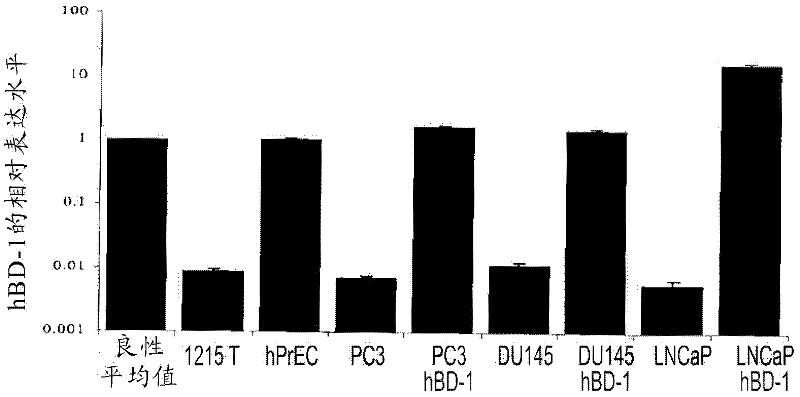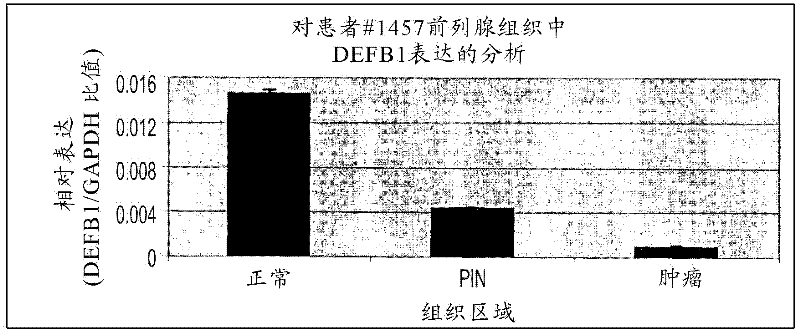Targeting pax2 for the treatment of breast cancer
A technology for breast cancer and breast diseases, applied in breast cancer vaccines, gene therapy, recombinant DNA technology, etc.
- Summary
- Abstract
- Description
- Claims
- Application Information
AI Technical Summary
Problems solved by technology
Method used
Image
Examples
Embodiment 1
[0200] Example 1: Human β-defensin-1 is cytotoxic to advanced prostate cancer and is at the forefront role in tumor immunity in adenocarcinoma
[0201] In this example, DEFB1 was cloned into an inducible expression system to test how it affects normal prostate epithelial cells as well as androgen receptor positive (AR+) and androgen receptor negative (AR-) prostate cancer cell lines. Induction of DEFB1 expression resulted in decreased cell growth of AR- cells DU145 and PC3, but had no effect on the growth of AR+ prostate cancer cells LNCaP. DEFB1 also causes rapid induction of caspase-mediated apoptosis. The data presented here provide the first evidence of a role for DEFB1 in innate tumor immunity and suggest that its impairment promotes tumor development in prostate cancer.
[0202] Materials and Methods
[0203] Cell lines: Cell line DU145 was grown in DMEM medium, PC3 in F12 medium, and LNCaP (Life Technologies, Inc., Grand Island, NY) in RPMI medium. Growth media f...
Embodiment 2
[0231] Example 2: SiRNA-mediated knockdown of PAX2 expression results independent of P53 status of prostate cancer cells die
[0232] In this example, the effect of inhibiting the expression of PAX2 was detected by RNA interference in prostate cancer cells with different p53 gene status. The results demonstrate that inhibition of PAX2 leads to cell death independent of p53 status, suggesting the presence of other tumor suppressor genes or cell death pathways that are inhibited by PAX2 in prostate cancer.
[0233] Materials and methods
[0234] siRNA Silencing of PAX2: To achieve efficient gene silencing, a pool of four complementary short interfering ribonucleotides (siRNAs) targeting human PAX2 mRNA (accession number NM_003989.1) was synthesized (Dharmacon Research, Lafayette, CO, USA). A second pool of four siRNAs was used as a loading control for testing PAX2 siRNA specificity. Two of the synthesized sequences targeted GL2 luciferase mRNA (accession number X65324), an...
Embodiment 3
[0270] Example 3: Inhibition of the PAX2 oncogene leads to DEFB1- mediated death
[0271]Identification of tumor-specific molecules as targets for the development of novel cancer drugs is considered a major goal of cancer research. Example 1 demonstrates that there is a high frequency of impaired DEFB1 expression in prostate cancer, and that induction of DEFB1 expression leads to rapid apoptosis in androgen receptor-negative prostate cancer. These data suggest a role for DEFB1 in prostate tumor suppression. Furthermore, given that it is a naturally occurring component of the immune system of normal prostate epithelial cells, DEFB1 is expected to be a viable therapeutic agent with few to no side effects. Example 2 demonstrates that inhibition of PAX2 expression leads to p53-independent prostate cancer cell death. These data suggest the presence of other pro-apoptotic factors or tumor suppressors that are inhibited by PAX2. Furthermore, data suggest that the oncogene fact...
PUM
 Login to View More
Login to View More Abstract
Description
Claims
Application Information
 Login to View More
Login to View More - R&D
- Intellectual Property
- Life Sciences
- Materials
- Tech Scout
- Unparalleled Data Quality
- Higher Quality Content
- 60% Fewer Hallucinations
Browse by: Latest US Patents, China's latest patents, Technical Efficacy Thesaurus, Application Domain, Technology Topic, Popular Technical Reports.
© 2025 PatSnap. All rights reserved.Legal|Privacy policy|Modern Slavery Act Transparency Statement|Sitemap|About US| Contact US: help@patsnap.com



